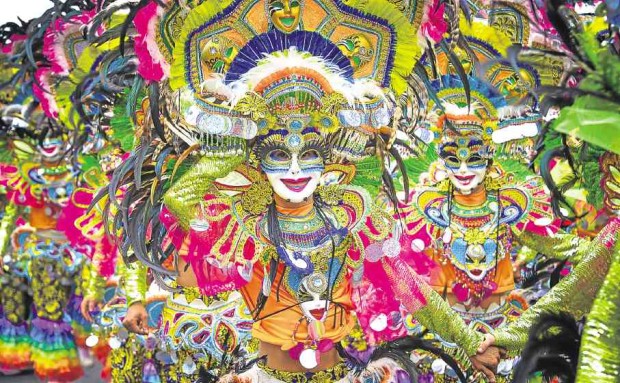
The Panaad sa Negros Festival is a celebration of Negros Occidental’s grandest festivals, outstanding products, best delicacies and famous landmarks. —CONTRIBUTED PHOTOS
BACOLOD CITY—Negros Occidental is offering the best of its 12 cities and 19 towns during the 24th Panaad sa Negros Festival on April 22-30.
“This is one unique festival that gives room for everyone,” Gov. Alfredo Marañon said. “Farmers, fisher folk and agricultural workers take center stage with their best produce, the youth bring to the fore their talents, the schools and the academe, the indigenous peoples all have their special place during the festivities.”
Called the “festival of festivals,” the Panaad has become a potent venue to bring together the best tourism and cultural showcases of local governments in the province for the past two decades. The towns and cities gather to celebrate thanksgiving for better harvests and continued blessings.
Last year, the Panaad was awarded the Best Tourism Event in the provincial festival category by the Department of Tourism and the Association of Tourism Officers of the Philippines.
This year’s event carries the theme, “Shining @ 24,” and is a prelude to a much bigger silver anniversary celebration next year. It opened at the Panaad Park and Stadium in Barangay Mansilingan here yesterday.
The best performing tribes from 20 towns and cities joined the festival dance competition, according to its director, Rudy Reveche. Clad in brightly colored costumes, they danced to the swinging beat of festive music.
These included the Pintaflores of San Carlos, Himayaan of Himamaylan, Kali-kalihan of Salvador Benedicto, Kisi-kisi of Ilog, Tinabuay of Murcia, Minulu-an of Talisay, Bulang-bulang of San Enrique, Dinagsa of Cadiz City, Kadalag-an of Victorias City, Manang Pula of Victorias, Manlambus of Escalante, Pagbanaag of Hinoba-an, Sinigayan of Sagay, Bailes de Luces of La Castellana, Dinagyaw sa Tablas of Candoni, Pasaway of Sipalay, Lubay-lubay of Cauayan, Pasundayag of Valladolid, Udyakan of Kabankalan and Babaylan of Bago.
Bacolod City’s world-famous Masskara Festival performers appeared as guests.
The towns and cities will highlight landmark or tourism structures in their areas in permanent pavilions at the Panaad Park, as well as their best handicraft, delicacies and sea food.
“Adding color to the celebration are the variety of Negros cuisine and mouth watering local delicacies that draw thousands of domestic and foreign visitors, who come to the province only to satisfy their gastronomic cravings,” Marañon said.
For instance, the booth of Ilog town will serve its popular crabs and clams, while Cadiz City will offer dried fish. Hinigaran town is noted for its grilled pork and seafood; Silay, its native delicacies; San Carlos, peanuts and banana fritters; and Manapla, “puto.”
Other opening day activities included a Lechon Parade, the Panaad Tourism, Agri-Trade Fair and Exhibits, the Organik na Negros Agri-Fest & Agri-Clinic at the Organic Village, a Livestock and Dairy Fair, and an Eco-Garden Show.
A latest addition is the Bamboo Village, or the Bamboo Technology Innovation Center, which will showcase the different bamboo species, products and handicrafts to promote bamboo’s potential for investment.
“The festival is a thermometer or gauge of the degree of development achieved by the province in its diversification efforts from its monocrop sugarcane-based economy, toward being the leader in organic agriculture since 2012,” said Ma. Lina Sanogal, Masskara Festival executive director and action officer.
“Negros Island as a whole is nearing its vision of becoming a green island because aside from organic agriculture, it is also now a leader in renewable energy, with solar power produced in Negros Occidential and geothermal power in Negros Oriental, not to mention its rich biodiversity, with some six protected areas,” she said.